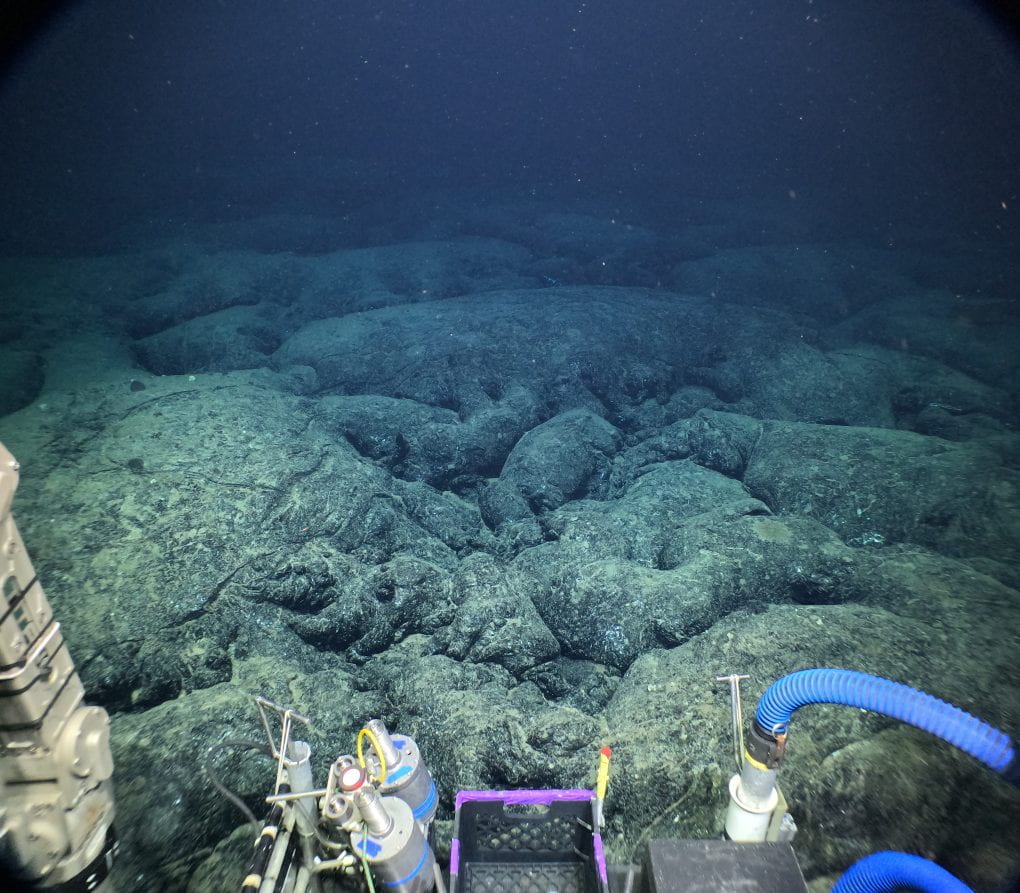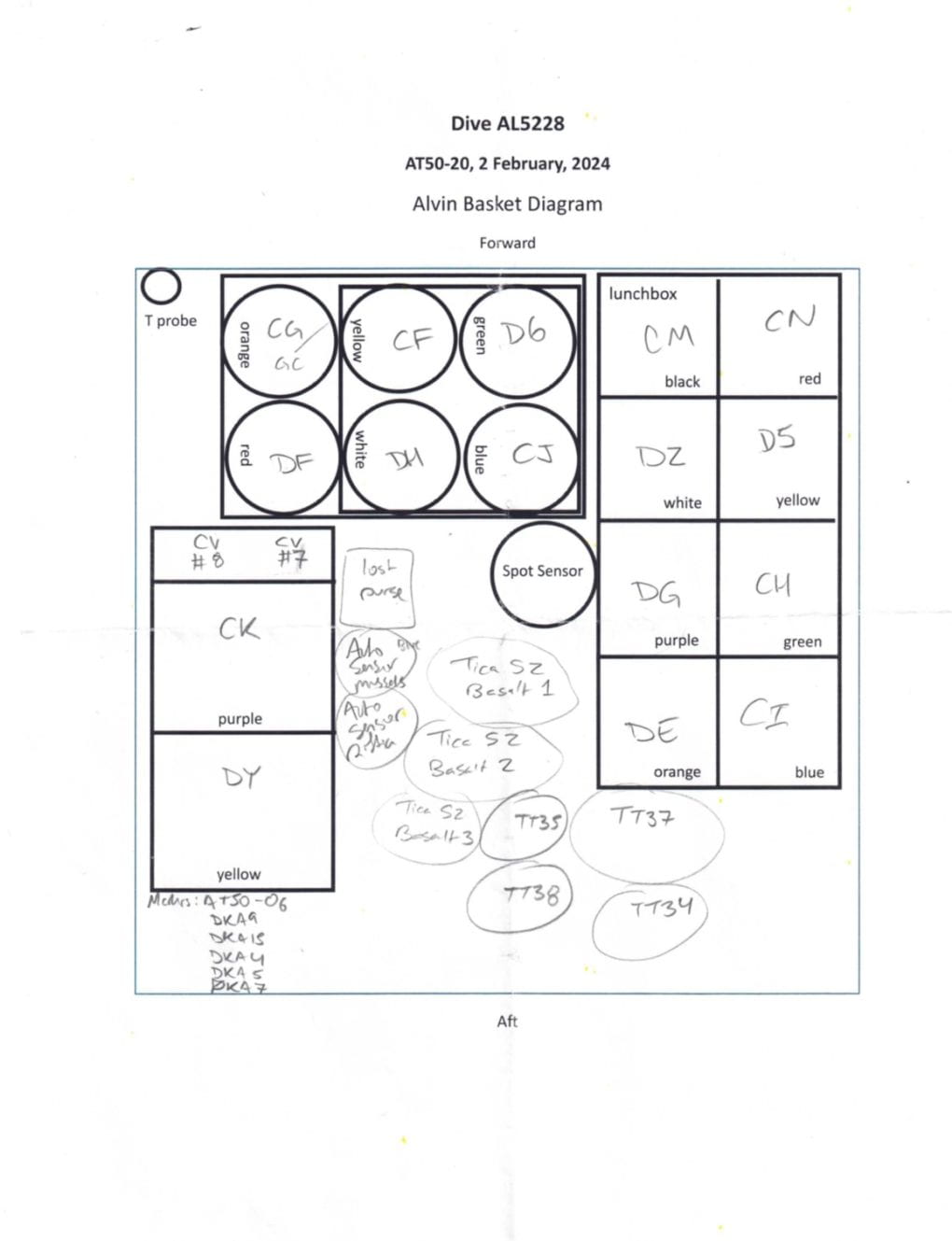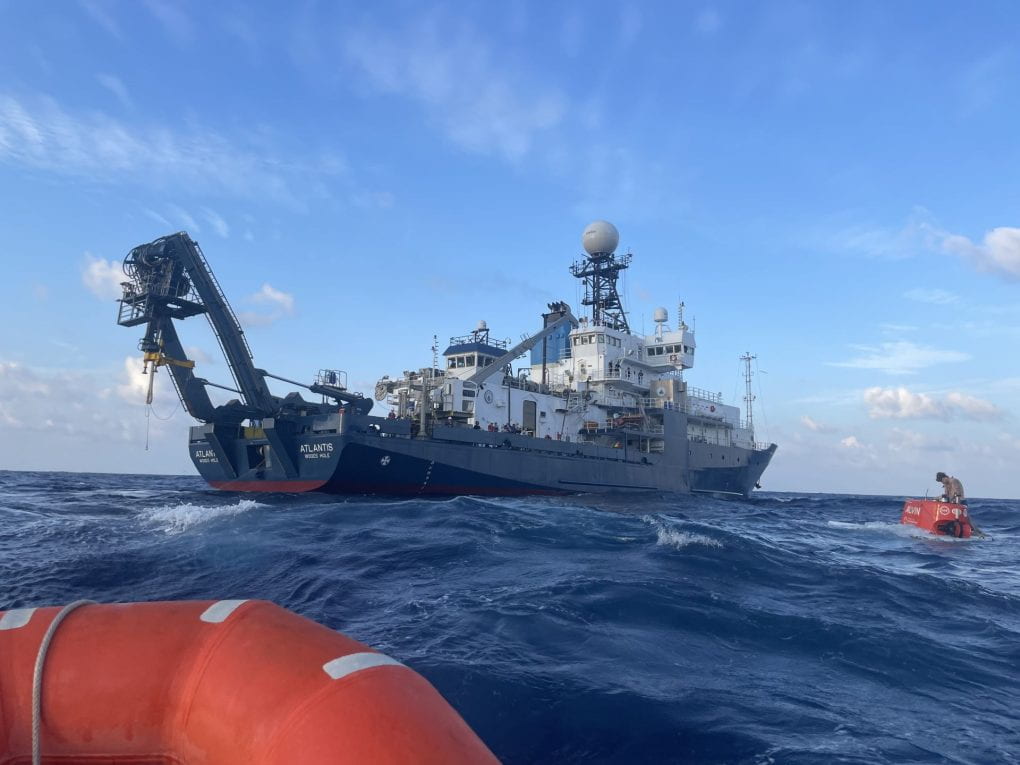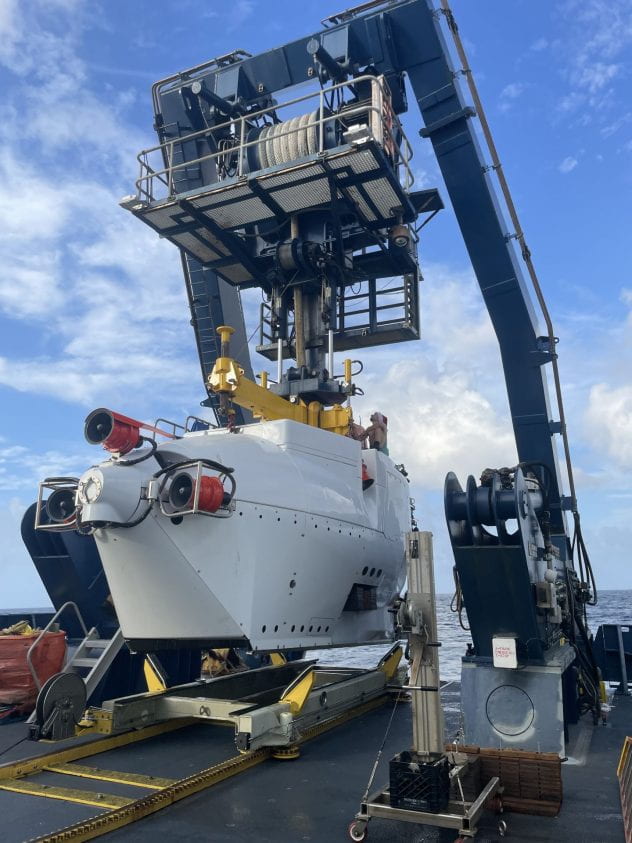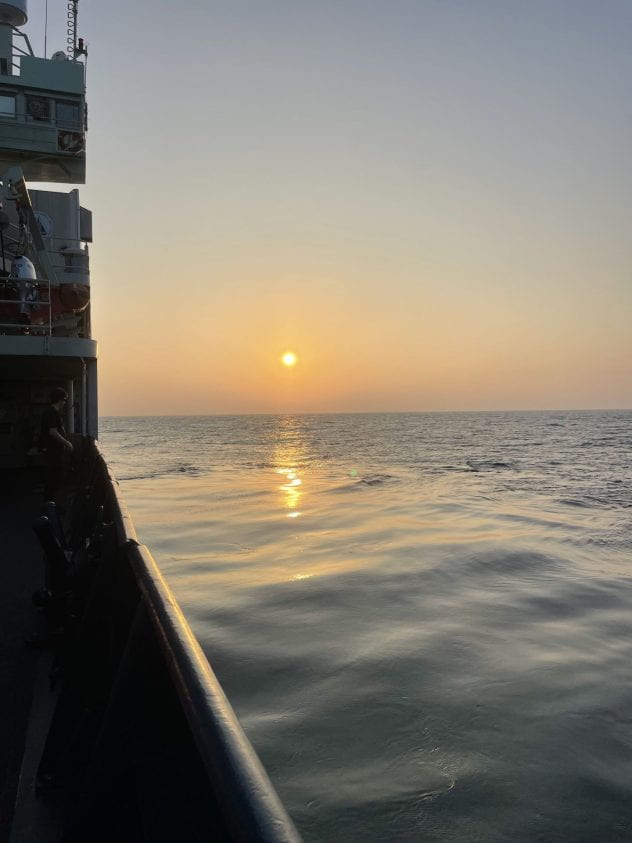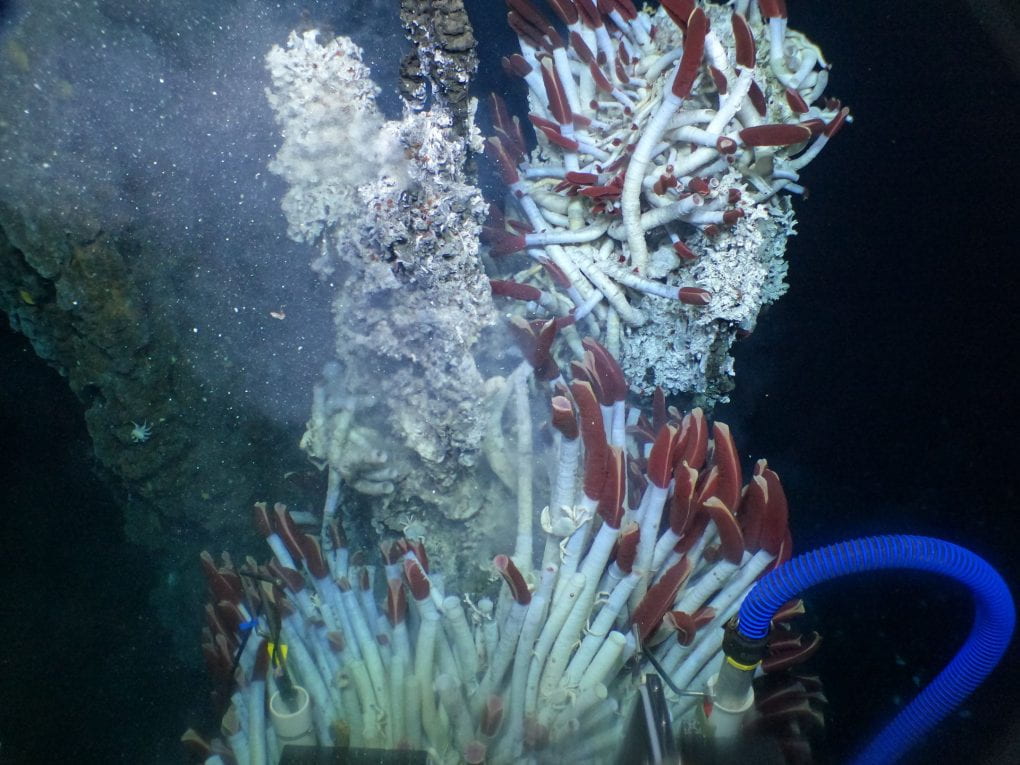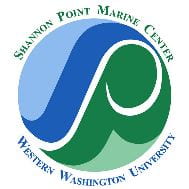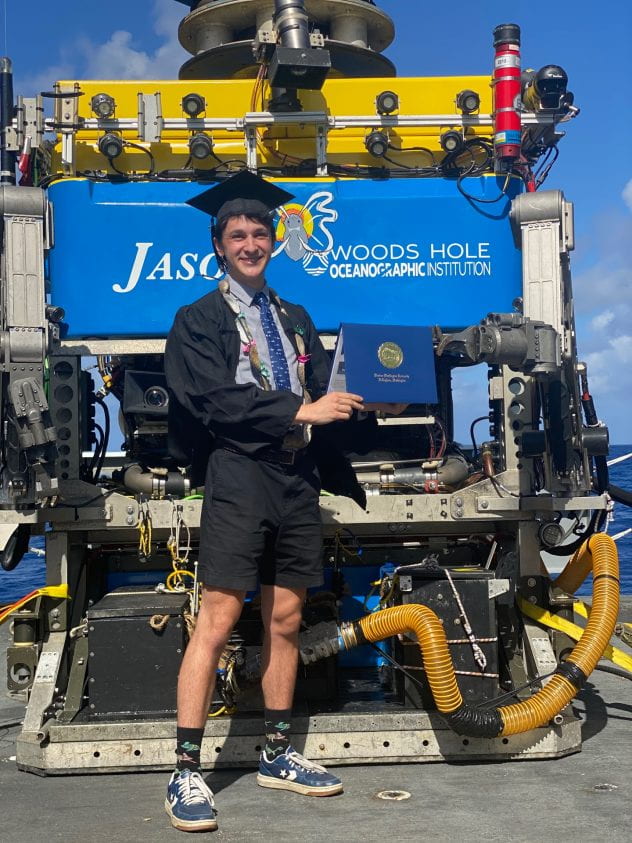Announcement
The Arellano Larval Lab is currently seeking one WWU undergraduate intern to conduct deep-sea biological research at Shannon Point Marine Center (SPMC) and join on an upcoming research expedition to the East Pacific Rise (EPR) hydrothermal vents. The position is an NSF-funded Research Experience for Undergraduates internship, starting winter quarter 2024 as part a project to explore the predictive nature of microbial biofilms for cuing larval settlement at deep-sea hydrothermal vents. Gain valuable experience both in the lab and at sea while investigating larval and microbial ecology in unique and fascinating hydrothermal vent ecosystems. This position includes a stipend during the academic quarter that the research cruise will take place (winter quarter 2024). During other academic quarters research credits may be earned and development of an undergraduate thesis project is encouraged.
To learn more about the project, visit here to read the overview and here to read the blog posts from our first cruise!
Internship Details
This paid internship will be full time during winter 2024 (ie, you will NOT be able to take any courses at WWU in winter quarter). Please note that this position requires significant time onboard a research vessel at sea (30 days) and international travel (Costa Rica), so a passport is required. All travel to and from the port, all meals and lodging during travel, and all meals on board the ship will be provided. After the research cruise, housing at the SPMC dorms will be provided.
Student Expectations
In collaboration with Dr. Arellano, the intern will develop a guided, individual research project related to the goals of the described research topic. During the research cruise in January- February 2024, the intern may start developing their research project so that sampling or experimental work can be conducted. Besides working on their own research, the intern will be expected to participate in general cruise objectives, such as sample logging, dive video editing, and sample processing. To get an idea of what it is like to be on a research cruise, take a look at the larval lab blog posts from recent cruises: EPR, SALT, Lau Basin.
This internship is designed in coordination with WWU’s research participation courses (see below) to integrate undergraduates in every aspect of research, from proposal development to communication of results. Besides participation in the cruise and conducting the independent research project, we will encourage student interns to enroll for credit through their majors (e.g., MACS 494 Independent Research Project, MACS 496 Communicating Marine Science Research, ESCI 498A Senior Thesis, ESCI 498B Internship, ESCI 498C Senior Project; OR via and Independent Study in Biology).
Enrollment in one of the above MACS, ESCI, or Biology research courses will be encouraged in the quarter after the cruise activities. During this time students will work one-on-one with Dr. Arellano as they finish developing their independent project and process samples and data from the cruise. Further research credits may be earned in future quarters depending on research and academic goals.
Students will gain valuable scientific skills working on this project, including molecular techniques, microscopy, and data analysis. They will also get the opportunity to learn first-hand about deep-sea research assets and cruise logistics. Additionally, students will be encouraged to present their research at scientific conferences and on campus (for example, during WWU’s Scholars Week) to enhance their communication skills, network with scientists, and get experience presenting scientific research to a variety of audiences.
Eligibility
Open to WWU undergraduate students in MACS, ESCI, Biology, or other related science major programs.
Preference for students that have at least one-two years remaining (after this year) as an undergrad at WWU.
Students supported with NSF funds must be citizens or permanent residents of the United States.
The Arellano lab is committed to supporting students with diverse backgrounds, experiences, and needs.
How to apply
Application package includes responses to the following prompts, CV, and unofficial transcripts. These will be submitted through a google form here.
Responses to the following should conform to character limits and be submitted through the google form.
- Describe the areas of marine science that most interest you and your personal goals for the internship and beyond. (4000 character limit maximum, ~1 page, 12pt font, single spaced)
- What qualities and characteristics will you bring to the program because of your work/activities/other life experiences? (2000 character limit maximum, ~1/2-page, 12pt font, single spaced)
- Write about an experience of overcoming adversity or an obstacle in your life. (2000 character limit maximum, ~1/2-page, 12pt font, single spaced)
- The name(s) of 1-2 professors here at WWU who could speak to your interests, motivation, work ethic, and accountability.
Important Dates
Application due date October 20, 2023
Awardees notified November 5, 2023
Cruise information: 30 days at sea on the RV Atlantis during winter quarter 2024 (Depart from San Diego, CA January 10; Return to Golfito, Costa Rica February 10).
If you have any additional questions, please contact Dr. Shawn Arellano (arellas@wwu.edu)
Funding provided by: NSF Award # 1948580








